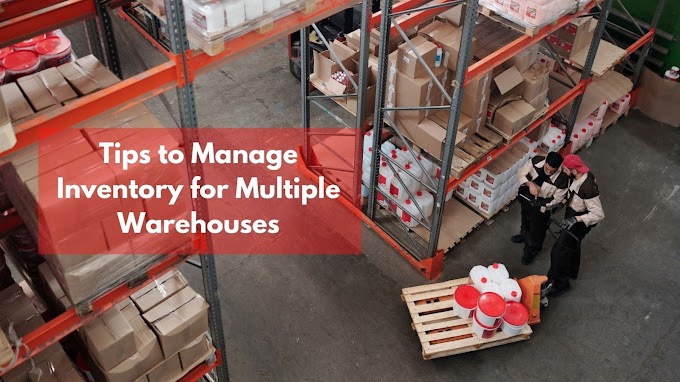Warehouse Management System refers to the control, process, and optimization of warehouse related operations from the day the inventory enters into a warehouse, or multiple warehouses, till the day items are sold, consumed or moved.
In the most general case, these operations revolve around shipping and receiving.
- Shipping: Processes like picking, marking, packaging, weighing, and delivering products from the warehouse straight to the customers
- Receiving: Intaking, Identifying, Inspecting, and Storing inventory
Poorly-managed warehouses run into several problems, all of which impact the profitability of the business:
- Inaccessible inventory and equipment
- Disjointed teams and employees
- Rigid and restrained layouts that undercut productivity
- Counterintuitive and redundant processes
None of this is good for a business. If warehouse operations are not up to the mark, it becomes nearly impossible to serve vendors, customers, and the organization. A smart warehouse management software (WMS), allows you to do more while working less.
It results in saving time, money, and energy, which you can further reinvest into spurring your business for further growth. Throughout this guide, we’ll take an in-depth check on everything that goes into effective warehouse management. Before we move forward with it, let’s spell out some basics first.
Inventory management vs. Warehouse management
What's the difference between inventory management and warehouse management? While these two terms overlap, there are key differences between the two.
Inventory management focuses solely on the items held within a warehouse. As a segment of the supply chain, inventory management includes aspects like controlling and overseeing purchases — from customers as well as suppliers, maintaining the storage of stock, controlling the quantity of the product purchased, and order fulfilment.
Warehouse management, on the other hand, is more concerned with the “journey” of all individual items as they flow from receipt to shipment through the warehouse.
Principles of Warehouse Management
For a warehouse to run in a better way and be successful, your approach must be supported on a solid foundation or base. Let’s break down the key warehouse management principles to develop your approach-
Be data-driven
Perhaps the mistake most warehouse managers usually make is assuming that things are running as smoothly as possible because everything seems to be going fine without any hurdles.
Even if no problems or hurdles seem to occur, that doesn’t mean the warehouse is running at its maximum capacity. There might be a need for a variety of improvements to be made to the team’s processes that are being overlooked on a day-to-day basis.
The solution: Ensure that your warehouse management processes are 100% driven by data.
What's important is to notice that being data-driven means considering any data you’ve collected which will or might not lead you to a more informed decision. Rather, data-driven warehouse management involves considering your data first, then coming to a choice that what this data tells you.
Gain control
To manage your warehouse effectively, you must have complete control over all the goings-on within the building.
If you’ve found that doing a, b, and c things will result in more productivity, you would like your team to do x, y, and z and do it well. An important part of warehouse management is the creation of processes, systematic workflows, and protocols for your teams to follow throughout their daily routine operations.
Be flexible
While control is important, it’s also essential to stay flexible. Why? Because warehouse operations don't happen during a vacuum. Your processes and workflows may illustrate the distinctive way in which a warehouse operates. But things will not always go according to the plan.
It’s up to you, then, to enable your team to shift gears whenever different circumstances arise.
Invest in technology
To be sure, there are good sort tools available to assist you to improve warehouse management across the board. From good warehouse and inventory management systems to data-collection tools, investing in fair technology can allow your warehouse to run as effectively as possible.
Lastly, it’s important to stay up with new tools and technology that emerge as time goes on. Again, it’s not about using newly-released tools just to use them — but to understand whether the new piece of technology will benefit your warehouse operations and how.
Keep the customer central
Everything that's happening within the warehouse is to help your customers receive the right products they’ve ordered.
Keep in mind your warehouse operations must be tailored in such a way that it helps fulfil your customers’ expectations and needs.
By keeping a check on your customers’ needs, you'll be able to optimize the warehouse operations in such a way that it will lead to a positive impact on your customer's experience with your brand.
You might also like - Best practices in Warehouse Management System









2 Comments
Awesome, Good to find this informative blog.
ReplyDeleteWarehouse Control System
Informative and helpful Article. Really good work. Appreciate it. You might be looking for Best Inventory Management Software for Small Businesses in Bangalore
ReplyDelete